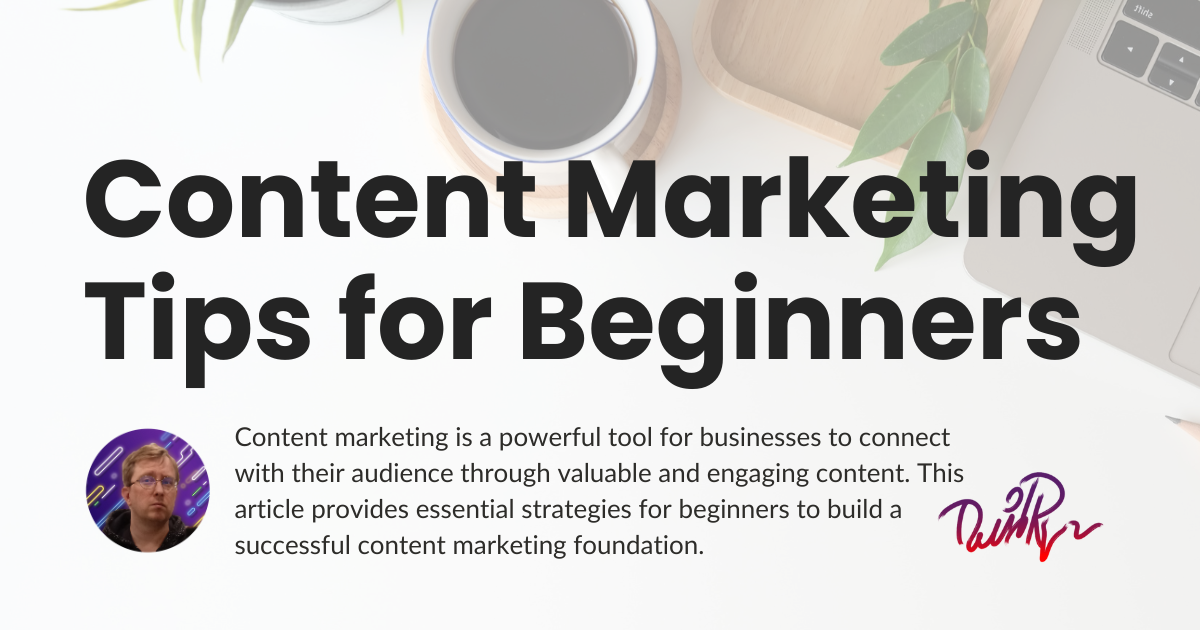
Content marketing is a way for businesses to connect with people through valuable content that informs, entertains, or solves problems. It has become a huge part of online marketing because people are always searching for information that helps them make decisions. But creating content that works requires more than just posting articles or videos. You need a strategy that guides your efforts and ensures that you’re reaching the right people at the right time. In this article, we’ll go over the foundational strategies for effective content marketing so that even beginners can get started with confidence.
Table of Contents
Understand Your Audience
The first step in content marketing is understanding who you’re speaking to. Knowing your audience makes it easier to create content that resonates with them and keeps them coming back. To truly understand your audience, it’s helpful to create what are called buyer personas. A buyer persona is a profile of your ideal customer, including details like their age, interests, job, and goals. To make a buyer persona, start by researching your current customers. You can use surveys, social media insights, or analytics tools to learn about their preferences and behaviors. This way, you’ll know exactly who you’re creating content for, and it becomes easier to speak directly to their needs.
Another important part of understanding your audience is mapping out the customer journey. The customer journey is the process people go through as they move from learning about a product to deciding to buy it. In general, the customer journey has three stages: Awareness, Consideration, and Decision. At each stage, customers have different needs. For example, people in the Awareness stage may need educational content that teaches them about a problem. People in the Consideration stage might look for more detailed information that helps them compare options. And in the Decision stage, customers need content that convinces them that your product is the right choice.
Set Clear Goals and KPIs
Having clear goals is essential for successful content marketing. Without goals, it’s hard to know if your efforts are paying off. Start by defining success metrics, also called Key Performance Indicators (KPIs), to measure how well your content is doing. Some common content goals include brand awareness, lead generation, and conversions (meaning when people take a specific action, like signing up for a newsletter or making a purchase). To measure these goals, use KPIs like website traffic, engagement rates (such as likes, shares, and comments), and conversion rates.
It’s also important to align your content goals with your overall business objectives. If your business goal is to increase sales, your content might focus on educating customers about how your product solves a common problem. Or, if your goal is to build a loyal audience, you might create content that shares helpful tips or insights to keep readers engaged. When your content goals support your business goals, you’ll be able to show how content marketing is directly helping your company grow.
Develop a Content Strategy and Plan
Creating a strong content strategy is essential for staying organized and making sure that your content is always aligned with your audience’s needs. One way to do this is by choosing content themes and pillars. Content pillars are the main topics that you’ll consistently cover. For example, a health and wellness brand might have pillars like “Nutrition,” “Exercise,” and “Mental Health.” By focusing on a few key themes, you can make sure your content stays relevant and consistent.
Another important part of your content strategy is understanding the basics of keyword research and SEO. Search Engine Optimization, or SEO, is a way to make your content easier to find on search engines like Google. A simple way to get started with SEO is to use keyword research tools to find out what your audience is searching for online. Look for keywords that match your content pillars and use them naturally in your articles, titles, and descriptions. This way, more people will be able to find your content when they search for related topics.
A content calendar is also essential to staying organized. Planning your content ahead of time helps you stay consistent, which is crucial for building an audience. A content calendar is simply a schedule of what you plan to publish and when. You can use tools like Google Calendar, or other online tools, to create a content calendar that includes important details like posting dates, platforms, and content topics.
Choose the Right Content Types and Channels
When creating content, it’s helpful to experiment with different types to see what works best for your audience. Some popular content formats include blog posts, videos, infographics, and podcasts. Each type of content has its own strengths. For example, blog posts are good for sharing in-depth information, while videos are great for capturing attention quickly. Think about your audience’s preferences when deciding which formats to use.
In addition to content types, choosing the right distribution channels is key to reaching your audience. Different platforms attract different audiences, so you’ll want to select channels where your audience is most active. For example, Instagram and TikTok might work well for reaching younger audiences, while LinkedIn is more suitable for a professional or B2B audience. You don’t need to be on every platform; focus on a few where you can be most effective and maintain a strong brand presence.
Content Creation Tips for Beginners
When you’re new to content marketing, it’s easy to feel overwhelmed. However, one of the best pieces of advice for beginners is to focus on quality over quantity. It’s better to publish a few well-researched, valuable pieces of content than to post a large number of low-quality posts. High-quality content keeps people engaged and encourages them to trust your brand.
🎯7 Uncommon Marketing Strategies to Jumpstart Your Business – In this Article, we’ll explore unique and effective marketing tactics that will help you stand out from the competition and accelerate your business growth.
Establishing a consistent brand voice is another important step. Your brand voice is the tone and style of your content. For example, some brands have a fun and casual voice, while others are more formal and professional. Choose a voice that reflects your brand’s personality and appeals to your audience. Consistency in tone helps your audience feel familiar with your brand, which builds trust.
Another helpful tip is to understand some basic design principles. Even if you’re not a professional designer, you can still make your content visually appealing by using simple design tools like Canva. Keep visuals clean and organized, use contrasting colors, and add visual hierarchy (e.g., larger fonts for titles) to make your content more readable.
Content Distribution and Promotion
Creating great content is only half the battle; you also need to make sure people see it. There are two main ways to get your content out there: organic and paid promotion. Organic promotion includes strategies like SEO and social sharing. For example, if you write a blog post, you can share it on your social media pages, email newsletter, or forums where your audience is active. Paid promotion, like running ads on social media, can help you reach a larger audience more quickly. Even a small budget can help boost the visibility of important content.
Another way to expand your reach is through cross-promotion and repurposing content. Repurposing means taking a piece of content and adapting it for different formats or platforms. For example, you could turn a blog post into a series of social media posts, an infographic, or even a short video. Repurposing content allows you to reach different audiences without starting from scratch every time.
Measure and Optimize Your Content Strategy
The final step in content marketing is measuring the results of your efforts and using that information to improve. Start by tracking key metrics like traffic, engagement, and conversions. Tools like Google Analytics, as well as social media insights, can help you understand how people interact with your content. For example, if certain posts get a lot of likes and shares, you know that this type of content resonates with your audience.
Content marketing is an ongoing process, so it’s important to iterate and improve based on data. If a piece of content doesn’t perform well, look at what you can change. Maybe the title wasn’t engaging, or perhaps the post didn’t address the right audience need. Use insights from past content to make future content even better.
Common Content Marketing Mistakes to Avoid
There are some common mistakes that beginners should avoid. One major mistake is lack of consistency. Posting sporadically can make it hard to build a loyal audience, so sticking to a regular posting schedule is key. Another mistake is ignoring audience feedback. Pay attention to what people say in the comments or through surveys. Feedback can help you adjust your strategy to meet your audience’s needs better. Also, beginners often overlook the importance of SEO and focus too much on selling rather than providing value. Remember, content marketing is about building trust, not just promoting products.
Conclusion
Getting started with content marketing can be challenging, but having a clear strategy can make it much easier. By understanding your audience, setting clear goals, creating a plan, and measuring results, you can develop a successful content marketing strategy that grows over time. Remember, content marketing is a long-term investment. Take it step by step, learn from your results, and adjust your strategy as needed. With patience and persistence, you can build a content marketing strategy that benefits both your audience and your business.
Related Articles
Choosing Your Niche: This article helps you identify the right niche for your content, which is crucial for effective content marketing.
SEO vs Facebook Ads: The Ultimate Showdown for Online Success: This article compares two powerful digital marketing strategies, helping you decide which one is best for your goals.
Digital Marketing Strategies for Small Businesses: This article provides essential strategies for small businesses to build a strong online presence and reach their target audience.
